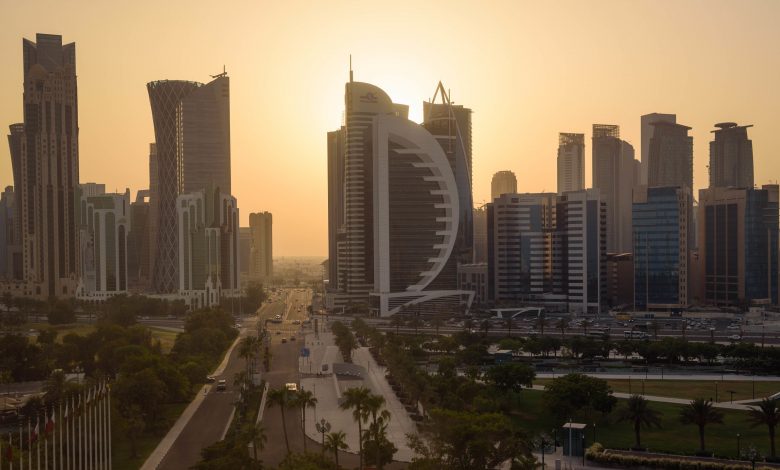
S&P affirms Qatar’s rating; outlook remains stable
ستاندرد آند بورز تؤكد تصنيف قطر مع نظرة مستقبلية مستقرة
By Satish Kanady I The Peninsula
Doha: The S&P Global Ratings has affirmed its ‘AA-/A-1+’ long- and short-term foreign and local currency sovereign credit ratings on Qatar. The outlook is stable.
“The stable outlook indicates our view of broadly balanced risks to the ratings. Despite a sharp economic contraction and low hydrocarbon prices, we don’t expect the government’s fiscal and external stock positions will materially deteriorate beyond our expectations. We expect a timely policy response from the government in the context of continued liquidity challenges in the international capital markets,” the rating agency said yesterday.
Despite the sharp decline in economic activity associated with the COVID-19 pandemic and low hydrocarbon prices, income levels in Qatar remain among the highest of rated sovereigns, supporting its strong credit profile. High GDP per capita, rebounding to an average of $66,500 in 2021-2023 from a low of $55,700 in 2020, will mitigate the effect of weak trend growth expected throughout the forecast horizon.
S&P expects the rebound to be linked with an increase in hydrocarbon prices. It projects Qatar will continue to generate surpluses in its budgetary accounts on the general government level from 2021.
The country’s strong general-government net asset position remains credit strength. The government’s large liquid financial assets, averaging about 177 percent of GDP in 2021-2023, provide it with a strong buffer during economic and financial shocks.
The rating agency noted that despite current account deficits through 2021, Qatar’s external balance sheet remains strong, with liquid external assets continuing to offset the country’s stock of external debt by a sizable margin.
It expects the government will provide extraordinary liquidity support to the banking system, in case of sudden reversals in capital flows related to non-resident funding.
However, amid rising shocks from the COVID-19 pandemic and low oil prices, S&P expects Qatar’s GDP will contract 5.2 percent in 2020, before recovering to 3.1 percent in 2021.
Travel restrictions, including suspension of international passenger flights, closure of non-essential businesses and part of the Industrial Area, and banning all public gatherings, will weigh on key sectors of the non-hydrocarbon economy including manufacturing, retail, logistics, and construction. They together make up about 30 percent of Qatar’s overall GDP.
In its base-case scenario, S&P does not expect the ongoing blockade by some of the neighbouring countries to significantly affect the Qatari economy, given its very strong gas exports largely to markets outside the region.
Qatar derives about 50 percent of its GDP, 80 percent of government revenue, and more than 85 percent of exports from the hydrocarbon sector. This makes the country’s undiversified economy and credit profile vulnerable to sharp volatility in oil prices, to which most of its long-term gas contracts are linked.
S&P projects an oil price of $30 per barrel in 2020 and expect the current account balance to record a deficit of about 3.5 percent of GDP on average in 2020-2021. A sharp fall in current account receipts will be partially offset by reduced import bills for capital and consumer goods associated with lower domestic investment and private consumption amid the COVID-19 pandemic. In the remainder of the forecast horizon through 2023, it projects external balances to revert to a surplus of about three percent of GDP supported by relatively high oil prices.
The rating agency noted that Non-resident funding (deposits and interbank placements) to Qatar’s financial sector have risen significantly since late 2017, when they fell to their lowest point following the blockade.
The share of Qatari banks’ external liabilities maturing within 12 months to be about two-thirds of the total. In its base-case scenario, the rating agency envisages that banks’ external liabilities will decrease somewhat this year, as deposits are withdrawn at maturity in line with a global trend of cash accumulation, and increase moderately from 2021 through 2023. It projects Qatar’s gross external financing needs will rise to about 224 percent of current account receipts and usable reserves in 2020-2023, compared with 83 percent in 2014. Deterioration in external liquidity is largely from falling current account receipts against the backdrop of lower hydrocarbon prices.
source: thepeninsulaqatar
الدوحة – الشرق
أكدت وكالة “ستاندرد آند بورز” للتصنيف الائتماني، الجمعة، تصنيف قطر عند “AA-” وأبقت الوكالة على النظرة المستقبلية لدولة قطر عند “مستقرة”.
وقالت “ستاندرد آند بورز” – بحسب رويترز – إنها تتوقع استجابة في الوقت المناسب على صعيد السياسة من حكومة قطر لدعم سيولتها، مع الوضع في الحسبان استمرار الصعوبات في أسواق رأس المال العالمية.
وأشارت إلى أن قطر باعت سندات بقيمة عشرة مليارات دولار في أبريل ، لتكون أول دولة خليجية تجمع سيولة في أسواق الدين في مواجهة تراجع أسعار النفط والضبابية بالأسواق الناجمة عن جائحة فيروس كورونا.
وقالت وكالة التصنيف الائتماني – في بيان – “بالرغم من انكماش اقتصادي حاد وانخفاض أسعار النفط والغاز، لا نتوقع تدهورا جوهريا يتجاوز تنبؤاتنا في المراكز المالية للحكومة القطرية والأسهم الخارجية”.
وأضافت ستاندرد آند بورز أن مستويات الدخل في قطر لا تزال من أعلى الدول التي جرى تصنيف ديونها السيادية، مما يدعم مركزها الائتماني القوي.
وأشارت الوكالة إلى أن الموازنات العمومية لحكومة قطر توفر مصدات كافية للصمود في وجه صدمات النمو والعجز في التدفقات، وتوقعت أن تواصل قطر تحقيق فائض في حسابات الميزانية على المستوى الحكومي العام اعتبارا من 2021. مضيفة أنه بالرغم من عجز المعاملات الجارية في 2021، ستظل الميزانية العمومية الخارجية لـ قطر قوية.
كانت وكالة موديز قد خفضت التصنيف الائتماني الأسبوع الماضي النظرة المستقبلية للسعودية، عازية ذلك إلى ارتفاع المخاطر المالي بسبب انهيار أسعار النفط والضبابية حيال قدرتها على تعويض الفاقد في إيرادات النفط وتحقيق الاستقرار على صعيد الديون.
المصدر: al-sharq



